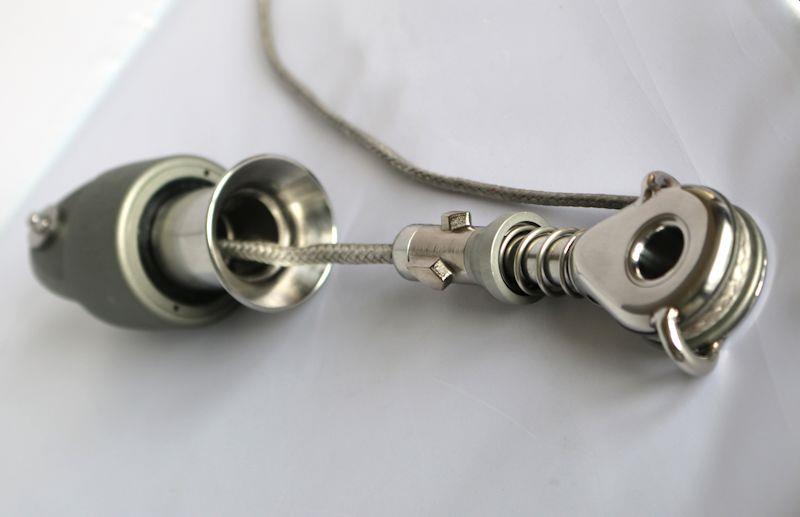No desire to dance around the bow sprit fighting a flogging jib during a sail change? Try a swiveling halyard lock! The technology is widely used on racing yachts.
Sail changes are much easier this way. The furled sail with its integrated anti-torsion stay is hoisted from the safety of the fore deck up to the lock and clicked in. Then the tack of the sail with the furling drum is pulled out to the tip of the bow sprit. The anti-torsion stay is tensioned the right amount and the sail is unfurled.
To change the sail it is rolled-up, the tension on the anti-torsion stay is released, the rolled up sail is brought back on deck, the halyard lock is released and the sail dropped on deck. The new sail with its own integrated anti-torsion stay is attached to the lock, hoisted from deck, the tack is pulled forward again, tensioned and then the sail is unfurled. It is important that there is no tension on the stay when locking or unlocking the halyard.
On EMMA we installed a Facnor swiveling halyard lock. There is a choice of three jibs: a light wind code zero type of sail, a normal midrange working jib and a spitfire jib for higher winds.
When not in use it is easy to stow the sails away in a sail locker instead of leaving them hoisted and exposed to the elements.
